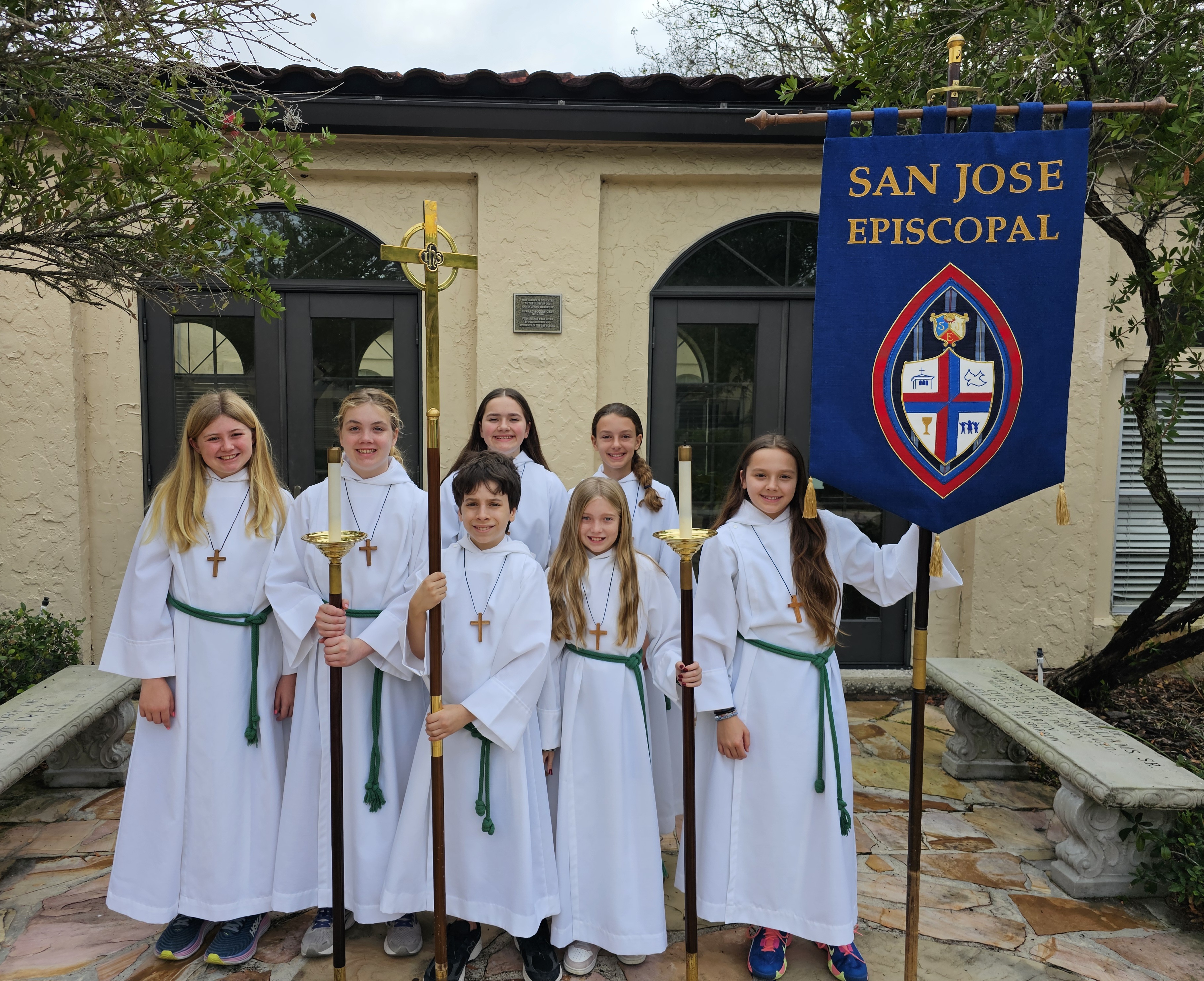
Sixth Grade Curriculum
Our Capstone Year marks the official beginning of our students’ Middle School experience, offering high-level and challenging curricular experiences that deepen both comprehension and expression. As readers, students examine literature through a more analytical lens—studying character interactions, narrative structure, and shifting points of view to understand how plot and theme unfold. They explore the power of figurative language and poetic form, and they learn to compare perspectives across texts and time periods. Informational reading takes on new complexity as students analyze central ideas, evaluate arguments, and identify rhetorical strategies, all while sharpening their ability to paraphrase, synthesize ideas, and track an author’s purpose and perspective. This level of analysis strengthens not only their academic insight but also their ability to think critically about the world around them.
As writers, students develop their ability to communicate in a way that is both compelling and versatile. They craft personal and fictional narratives with vivid language and thoughtful structure, while also writing persuasive and expository pieces supported by logical reasoning and evidence drawn from multiple sources. The writing process becomes more refined as they learn to plan, revise, and edit their work with purpose, using both peer and teacher feedback. Grammar, punctuation, and vocabulary are honed for precision, and students increasingly use digital tools and multimedia elements to strengthen the clarity and impact of their work. Through research projects, oral presentations, and collaborative writing, sixth graders learn to express complex ideas effectively and confidently—skills that form the foundation for success throughout middle school and beyond.
A distinctive feature of our sixth grade program is the collaborative work of our Upper School faculty, who design interdisciplinary units that bring learning to life across subjects. These cross-departmental experiences allow students to explore literature, history, and science through integrated inquiry. For example, while reading the fantasy-based class novel The Eye of Ra, students not only engage with the narrative’s literary elements but also delve into the historical and scientific context of Ancient Egypt, enhancing their understanding of both story and civilization. Book clubs centered around Greek mythology allow students to explore the myths’ literary structure and cultural significance, while also connecting to broader historical studies of the ancient world. These rich, layered experiences make learning immersive, helping students see the interconnectedness of knowledge and fostering curiosity that extends well beyond the classroom.
Skills & Understandings:
- Analyze how character interactions, multiple narrators, and shifts in point of view contribute to plot and theme in literary texts
- Explain how poetic forms and figurative language influence meaning, tone, and style
- Identify and analyze the development of stated or implied themes across a literary work
- Examine how specific text structures and features contribute to the meaning of a text
- Determine and analyze central ideas in informational texts, both explicit and implied
- Analyze an author’s purpose and perspective in multiple accounts of the same event or topic
- Track the development of arguments, identifying claims, reasoning, evidence, and rhetorical appeals
- Compare and contrast how authors from different time periods approach the same or related topics
- Paraphrase content accurately from grade-level texts
- Write personal or fictional narratives using strong narrative techniques, vivid language, and figurative devices
- Compose argumentative and expository writing using logical organization, varied transitions, relevant evidence, and elaboration from multiple sources
- Plan, revise, and edit writing thoughtfully, incorporating feedback from teachers and peers
- Use appropriate grammar, punctuation, capitalization, and spelling in all writing
- Conduct focused research using reliable sources, refining inquiry and integrating information effectively
- Use academic vocabulary, digital tools, and multimedia elements to enhance both written and oral communication
In sixth grade, students take a major leap forward in mathematical thinking as they transition from arithmetic to more advanced, abstract reasoning. They expand their number sense to include negative numbers and absolute value, gaining a deeper understanding of how numbers relate across the number line. Students master operations with positive rational numbers and begin extending those operations to include integers, applying properties of operations to rewrite and simplify expressions. Algebraic reasoning comes into focus as students learn to write and solve one-step equations and inequalities, laying the groundwork for future algebra. They build a strong understanding of ratios and unit rates, using them to solve real-world problems with precision and logic. In geometry, students apply their knowledge of the coordinate plane to solve increasingly complex problems, and they explore the properties and measurements of both two- and three-dimensional figures. Data analysis takes on new depth as students examine statistical distributions, determine measures of center and variability, and represent data graphically and numerically. Sixth graders experience a year of powerful growth, becoming analytical thinkers who approach problems with confidence and a strong command of mathematical language and reasoning.
Skills & Understandings:
- Extend knowledge of numbers to negative numbers and develop an understanding of absolute value
- Add, subtract, multiply, and divide positive rational numbers
- Apply properties of operations to rewrite numbers in equivalent forms
- Extend understanding of operations with integers
- Apply previous understanding of arithmetic expressions to algebraic expressions
- Develop an understanding of solving equations and inequalities
- Write and solve one-step equations in one variable
- Understand ratio and unit rate concepts and use them to solve problems
- Apply previous understanding of the coordinate plane to solve problems
- Model and solve problems involving two-dimensional figures and three-dimensional figures
- Develop an understanding of statistics and determine measures of center and measures of variability.
- Summarize statistical distributions graphically and numerically
In sixth grade, science in the Connell Family STEAM Lab—affectionately called The Zone—becomes a rigorous and expansive journey into the systems, structures, and forces that shape our world and life itself. Students begin the year by mastering the scientific method, learning to ask testable questions, conduct thoughtful investigations, analyze data, and draw evidence-based conclusions. These skills come to life through a full science fair project, where students pursue authentic, independent research from hypothesis to presentation. This emphasis on inquiry and reflection equips students with the critical thinking, problem-solving, and communication skills needed for more advanced scientific work.
Students dive deeply into life science, beginning at the cellular level as they explore the structures, functions, and processes of cells. Building on this foundation, they investigate how systems of tissues and organs in plants, animals, and microorganisms work together to sustain life. A study of taxonomy and classification introduces students to the six kingdoms of life and the power of scientific naming systems and dichotomous keys for organizing biodiversity. In genetics, students explore heredity and DNA, learning how traits pass from one generation to the next and how genes and the environment work together to influence development. Throughout these studies, students use models, collaborative discussions, and digital tools to organize, visualize, and communicate their growing understanding of biological systems.
Earth and physical sciences offer equally rich opportunities for exploration. Students investigate the formation of landforms and the processes of weathering and erosion, focusing on how Florida’s geology has been shaped over time. In studying weather, climate, and the water cycle, they interpret meteorological data, identify global patterns, and consider the impact of human activity on Earth’s systems. Through the lens of ecology, students examine how living and nonliving components interact within ecosystems and how changes in one part of a system can affect the whole.
In physical science, students develop a strong understanding of forces and motion by exploring concepts such as gravity, friction, and inertia. They investigate how objects move and interact, using hands-on experiments to model real-world phenomena. These explorations are often paired with engineering challenges and robotics projects, where students apply their knowledge of force and balance to design and code robotic systems. In these experiences, science, math, and technology are blended in meaningful, creative ways that deepen understanding of the physical world.
Throughout the year, students embody the Next Generation Science Standards (NGSS), acting as empowered learners, computational thinkers, and innovative designers. Whether analyzing climate trends, investigating the structure of DNA, or programming a robot to navigate a challenge course, sixth graders in The Zone develop a scientific mindset grounded in curiosity, creativity, and collaboration. They don’t just learn science—they apply it, question it, and use it to understand and shape the world around them.
Skills & Understandings:
- Ask questions and define problems, then independently plan and carry out scientific investigations—identifying variables, recording data, and drawing evidence-based conclusions
- Use, create, and evaluate models (e.g., of cells, water cycle, or Earth's layers) to represent systems and explain how parts influence the whole
- Understand the unique roles of scientific theories, laws, hypotheses, and models, recognizing differences between everyday and scientific meanings
- Recognize that science is a human endeavor built on evidence, creativity, and collaboration from diverse individuals
- Explain that all living things are made of cells, and understand how cells form systems, tissues, and organs
- Describe how plant and animal subsystems collaborate—such as through photosynthesis and sensory processing—to support life
- Explore genetics and environment, constructing explanations of how traits develop and influence growth
- Analyze ecosystem interactions, exploring matter and energy flow, resource availability, and biodiversity trade‑offs
- Collect and interpret data on weather and climate, including how air masses move and vary over seasons
- Develop models of Earth’s water and material cycles, showing the influence of the Sun and gravity
- Understand Earth’s structures and change, from landform formation to erosion, weathering, deposition, and surface reshaping
- Investigate resource distribution, explaining how historical and geological processes create uneven distributions of minerals, groundwater, and energy
- Analyze data on fossils, rocks, and continents, and infer evidence of past plate tectonics and environmental shifts
In sixth grade history, students embark on a sweeping exploration of the ancient world—a journey that ignites curiosity, deepens understanding, and sparks critical thinking. With maps in hand, they investigate how geography, climate, and natural resources shaped early civilizations and determined where people settled, how they lived, and how their economies thrived. They trace the migration of human populations and explore the physical and political boundaries of ancient cultures that still shape our world today. Through a rich comparative study of civilizations like Egypt, Mesopotamia, the Indus Valley, China, Greece, Rome, Kush, and Mesoamerica, students uncover the innovations, belief systems, and leadership structures that defined each society. They examine the rise and fall of empires, the spread of ideas along trade routes like the Silk Road, and the influence of democratic ideals born in Athens and Rome. From the teachings of Confucius and Buddha to the conquests of Genghis Khan, students encounter the ideas and individuals that transformed history. Along the way, they develop a historian’s toolkit—learning to analyze sources, apply chronological thinking, and make meaningful connections between the ancient world and our modern lives. By year's end, students don’t just understand ancient history—they carry its legacy forward, equipped with global awareness, civic understanding, and a profound sense of humanity’s shared story.
Skills & Understandings:
- Use maps to identify characteristics and boundaries of ancient civilizations that have shaped the world today
- Explain how major physical characteristics, natural resources, climate, and absolute and relative locations have influenced the settlement, interactions, and economies of ancient civilizations of the world
- Trace human migrations and how societies adapted to physical landscapes and ecosystems
- Compare early river-valley civilizations (Egypt, Mesopotamia, Indus, China) and their innovations in farming, writing, and government
- Explore other early societies in Greece, Rome, Kush, Axum, Mesoamerica, and South America, noting their social, religious, and economic systems
- Discover how ancient civilizations traded, shared ideas, and spread technologies like coinage, writing, and metalworking
- Examine major belief systems—like those in Egypt, Israel, India, and China and their impact on social structure and government
- Understand cultural diffusion and the spread of knowledge via the Silk Road, Indian Ocean trade, and Phoenician seafaring
- Trace the rise of Greek democracy, the Roman Republic, and civic virtues that influenced the modern U.S. government
- Study key conflicts like the Persian Wars, Peloponnesian Wars, and Punic Wars, and how they shaped empires
- Learn about influential leaders, such as Asoka, Confucius, Buddha, Genghis Khan, Kublai Khan, and their lasting legacies
- Understand the factors behind the fall of Western Rome and the rise of successor kingdoms
- Explain how ancient systems—law, government, religion, language—continue to influence life today
Schedule a Tour
Come see for yourself why SJEDS is an investment in a brighter future.










-min.JPG)
-min.JPG)
-min%20(1).JPG)






-min.JPG)
-min.JPG)